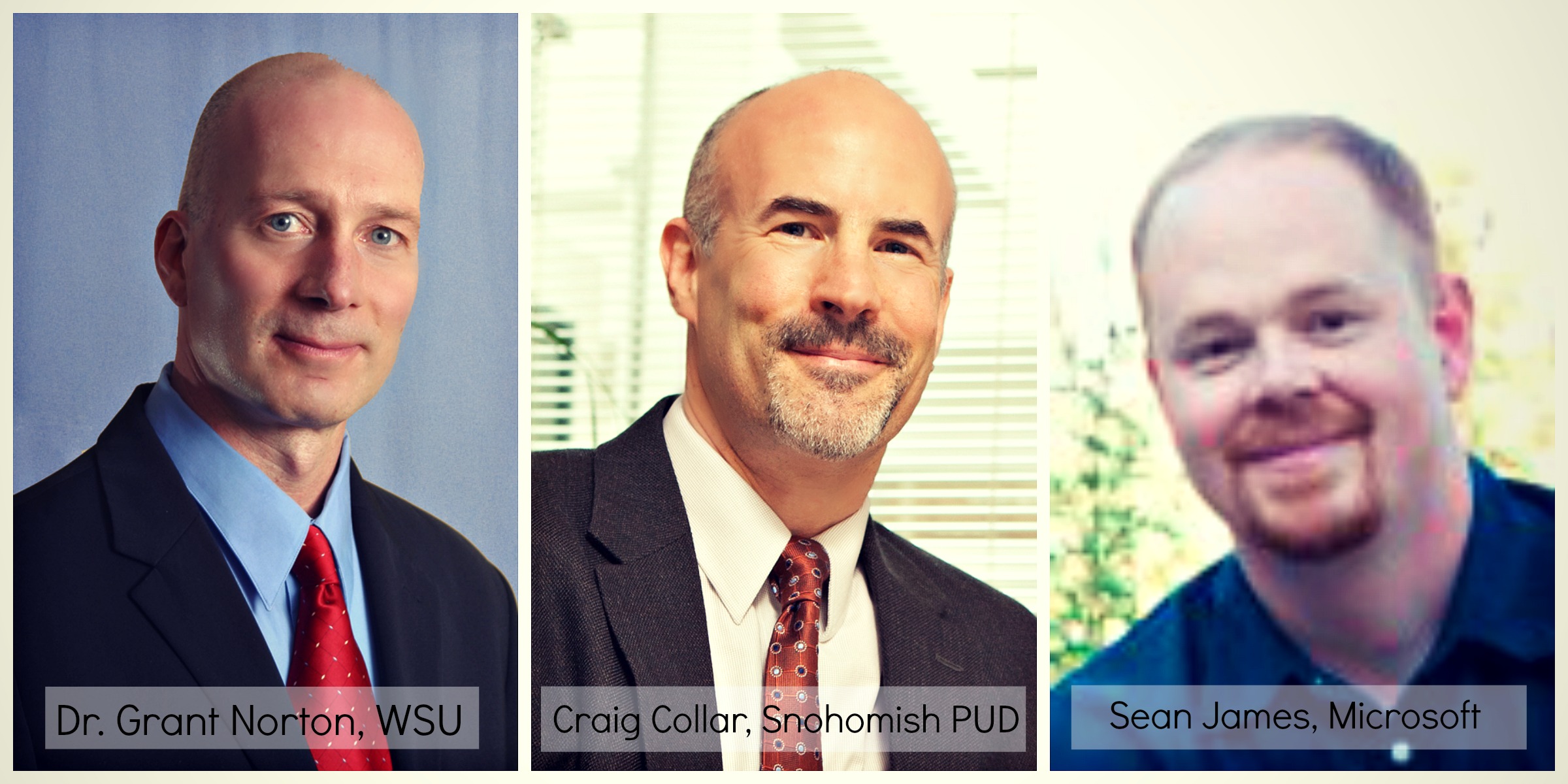By Russ Weed, UniEnergy Technologies

The Batteries Included event combined historical and technical background on batteries from Washington State University professor Grant Norton, and perspectives on the use and maturity of energy storage technologies in the utility industry from Snohomish County PUD assistant general manager Craig Collar, in the enterprise context by Microsoft senior research program manager Sean James, and in the mobile application space by Professor Norton.
 As part of the background on batteries, Grant explained some of the basic concepts of electrochemistry and the three core parts of a battery: anode, cathode, and electrolyte. A key message is that a battery’s capabilities are very much driven by its chemistry. Grant also gave an overview of fuel cells, including they were invented in 1842 by a useful lawyer (Sir William Grove)! Flow batteries (where the liquid electrolyte flows through the electrode stack with anode and cathode) can be seen as a kind of fuel cell, specifically as a “regenerative” fuel cell because as well as discharging energy like a true fuel cell, flow batteries are charged with energy from an external generation source.
As part of the background on batteries, Grant explained some of the basic concepts of electrochemistry and the three core parts of a battery: anode, cathode, and electrolyte. A key message is that a battery’s capabilities are very much driven by its chemistry. Grant also gave an overview of fuel cells, including they were invented in 1842 by a useful lawyer (Sir William Grove)! Flow batteries (where the liquid electrolyte flows through the electrode stack with anode and cathode) can be seen as a kind of fuel cell, specifically as a “regenerative” fuel cell because as well as discharging energy like a true fuel cell, flow batteries are charged with energy from an external generation source.
Craig summarized utilities’ perspective on grid-scale energy storage as possessing tremendous potential to integrate renewables and to build out the smart grid, but also facing challenges such as a currently costly supply chain and a lack of standards. He noted the energy storage market is now at the point where software and IT expertise can play a critical part in developing needed standards, and that Washington State with its strength in software and IT could become the center of industry leading work. An example is the Modular Energy Storage Architecture (MESA) that Snohomish PUD is pursuing in conjunction with a number of partners including 1Energy Systems, a Washington software and IT company; Alstom, based in Redmond with grid operating software; and UniEnergy Technologies, a Washington grid-scale flow battery company.
Sean began his presentation noting the typical data center energy system efficiency of ultimately putting to work less than 1% of the energy initially released at centralized generation sources. This includes losses at the generation source, transmission, distribution, and operations at the customer site. Sean mapped out the energy system at data centers and discussed the inefficiencies of powering them with reciprocating and other combustion engines as compared to the comparatively better efficiencies of electrochemical generation such as fuel cells. Sean then outlined a radically simplified energy supply chain with distributed energy generation, such as fuel cells, located right at the data center site. The distributed energy generation could also come from renewables, provided their intermittency is buffered by appropriate energy storage.
Part II in the WTCA’s next newsletter with follow-up questions from the event.
View the PowerPoint slides from the presentation.